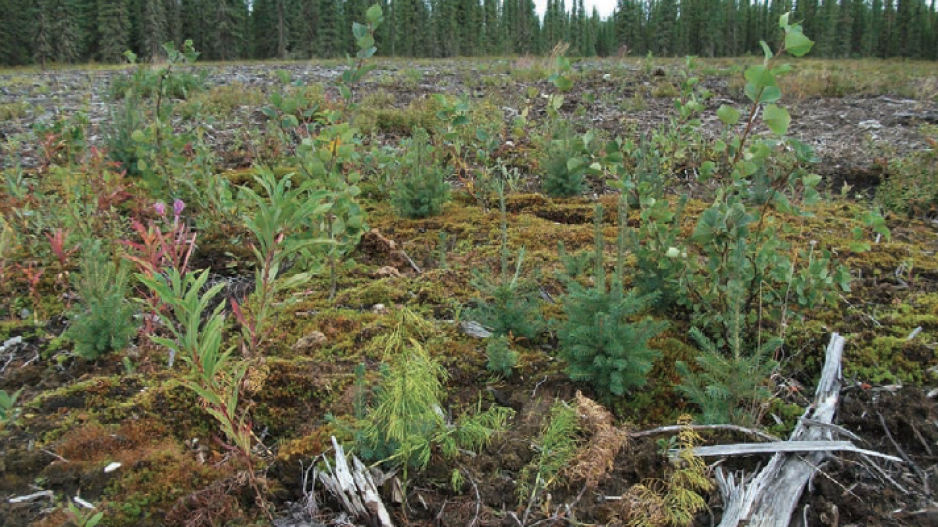Much of the opposition to the liquefied natural gas (LNG) industry revolves around the process of hydraulic fracturing, called fracking, that is used to access the gas.
Dave Russum, of Deloitte LLP’s petroleum consultancy, offers a graphic description of how modern fracking works, but you first have to think of the horizontal well as being like a foot.
“Between the heel and the toe of a horizontal well you isolate an interval close to the toe and frac that region,” Russum said. “Then you move back towards the heel, isolate another interval and do another frac.”
With today’s technology, horizontal legs many kilometres in length can be fracked in many places. This method produces hydrocarbons that can’t be reached by traditional methods, but the technology is challenging. A single well may involve a 40-member crew, 20 or more hydraulic compression systems mounted on huge fracking trucks, enormous volumes of water and several thousand tonnes of sand.
Environmental groups oppose fracking arguing the process will pollute groundwater or even ponds and lakes.
So intense is the opposition to fracking that France and Bulgaria, which have Europe’s largest shale gas resource potential, have banned the practice entirely.
Shale gas development has already begun in British Columbia and Alberta. In 2011, in response to a public outcry, Quebec announced that, pending a review by a panel of experts, it would no longer authorize fracking. Then New Brunswick and Nova Scotia joined in, and Newfoundland and Labrador has implemented a moratorium pending further study.
Last year, Canada’s own expert panel got into the act. Led by the Council of Canadian Academies, the panel concluded that the “assessment of environmental impacts is hampered by a lack of information about many key issues, particularly the problem of fluids escaping from incompletely sealed wells. If wells can be sealed, the risk to groundwater is expected to be minimal, although little is known about the mobility and fate of hydraulic fracturing chemicals and wastewater in the subsurface.”
According to the report, the “pertinent questions are difficult to answer objectively and scientifically, either because the relevant data have not been obtained; because some relevant data are not publicly available; or because existing data are of variable quality, allow for divergent interpretations, or span a wide range of values with different implications.”
Canada’s panel described a need for well-targeted science “to ensure a better understanding of the environmental impacts of shale gas development. Currently, data about environmental impacts are neither sufficient nor conclusive.”
Owning the contamination
While the Council of Canadian Academies’ expert panel calls for more and better science Deloitte’s Russum notes that whenever a company causes damage, it had better have the insurance coverage or the financial resources to put things right.
A company named Vertex, based in Sherwood Park, Alta., offers common ground from another perspective: the reclamation and remediation of land, ponds and groundwater.
The company provides services that “ensure regulatory compliance and project success from development, through production, ending with abandonment and reclamation,” according to its website.
Attitudes toward land, environment and safety have fundamentally changed over the years, the company’s Calgary-based executive vice-president, Paul Blenkhorn, said. Increasingly, these are “financial decisions for the people downtown sitting in the towers.”
Ten years ago, he said, “the president/CEO wasn’t asking, ‘What are we doing about the environment?’ in every conversation.”
Today, however, that issue is front and centre. And as that continues, “you are putting a financial measurement on the environmental viability of that land. You are creating interest in, then creating systems and procedures to do it smarter, faster and so on.”
Other provinces are mimicking the program.
“Saskatchewan’s program is not as old as Alberta’s, but they’re doing the same thing in their own way – creating a financial metric that says, ‘If all you’re creating is liabilities, and you’re not creating a gain, a viable balance sheet, we’ve got to protect the people.’ Then the companies go out and really spend more time on having environmental managers that are active in managing” land remediation and reclamation.
Without financing, most properties won’t change hands, and that reality is a good way to illustrate the increasing importance of government regulation in making sure water pollution and other forms of contamination get cleaned up. In commercial real estate regulations, the financer requires environmental assessments before issuing a loan. Those assessments will generate either a clean bill of health or an understanding of the property’s environmental liability.
“What happens in the Canadian real estate system is this: the collateral of that loan [is] the property,” according to Blenkhorn. “If contamination was encountered, the only thing [the lender] can do to recover the loan is to actually take back the property, which means they now own the contamination.”
Anybody with a financial interest in that property, including the financer, could ultimately be responsible for that contamination.
In this hypothetical case, the present owner of a property can “go back to the previous owner with the deepest pockets – anyone who ever owned that property before. [If you were a previous owner] they can go back to you personally and get you to clean it up.”
In the highly competitive energy industry, you don’t want to be putting your money into cleanup when you can be putting it into opportunities instead.
That’s why brass in the towers are asking, “What are we doing about the environment?” in every conversation. They don’t want to own contamination.
– Oilweek Magazine




